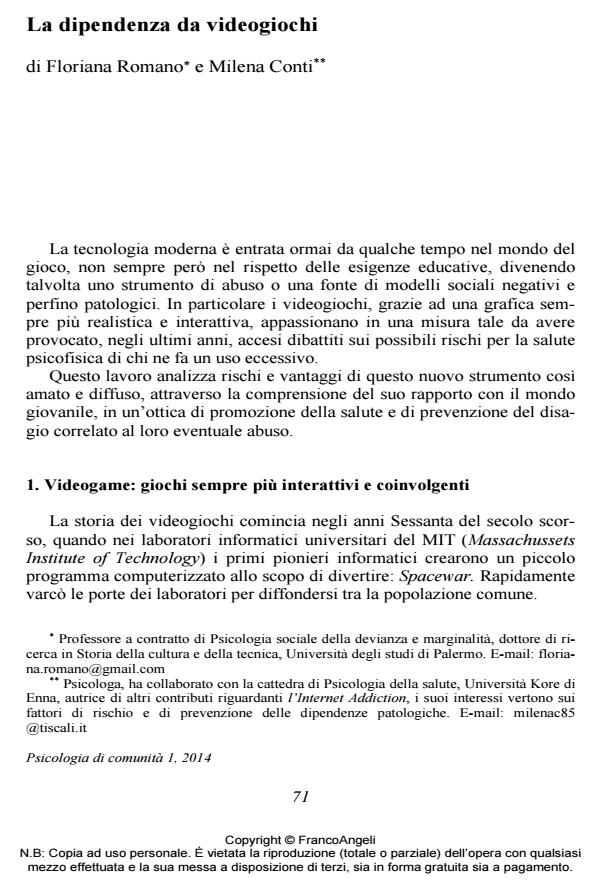Video game addiction
Journal title PSICOLOGIA DI COMUNITA’
Author/s Floriana Romano, Milena Conti
Publishing Year 2014 Issue 2014/1
Language Italian Pages 10 P. 71-80 File size 46 KB
DOI 10.3280/PSC2014-001006
DOI is like a bar code for intellectual property: to have more infomation
click here
Below, you can see the article first page
If you want to buy this article in PDF format, you can do it, following the instructions to buy download credits

FrancoAngeli is member of Publishers International Linking Association, Inc (PILA), a not-for-profit association which run the CrossRef service enabling links to and from online scholarly content.
The contribution analyzes the current debate about the risks but also about the potential use of video games by children. It emphasizes the need to start actions of prevention and to promote a positive and healthy use of video games. It is important to shift the focus on the positive aspects of the video game and to encourage them, in order mean to prevent the video game addiction. Moreover, prevention (in particular primary and secondary prevention) takes on peculiar importance in an age and in a context (that is the school and the family) in which the personal harmonic development is determining for the formulation of the objectives of life of the individuals themselves.
Keywords: Virtual reality, children, video game addiction, prevention, promotion, new technologies.
Floriana Romano, Milena Conti, La dipendenza da videogiochi in "PSICOLOGIA DI COMUNITA’" 1/2014, pp 71-80, DOI: 10.3280/PSC2014-001006